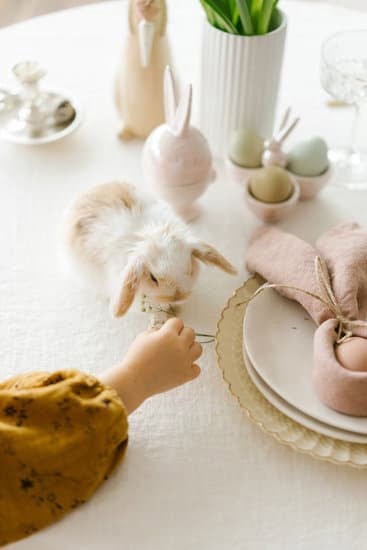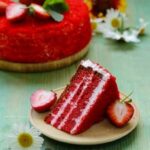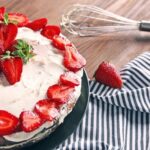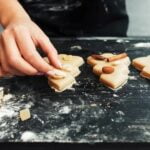Are you tired of the same old cake designs? Ready to take your cake decorating skills to the next level? Look no further. This article will introduce you to a world of new cake decorating ideas that will inspire and excite you. From unconventional materials to vibrant edible paints, sculpting magic, and futuristic edible technology, we will explore the latest trends and techniques that are revolutionizing the art of cake decoration.
Gone are the days of simple frosting and sprinkles. Today, cake decorating has evolved into a true form of artistic expression. With DIY cake decorating, you have the opportunity to unleash your inner artist and create awe-inspiring designs that are just as beautiful as they are delicious. Whether you’re a beginner or a seasoned baker, this article will offer valuable tips and tricks to help you master the art of DIY cake decoration.
In this journey through the exciting world of new cake decorating ideas, we will delve into different styles and techniques that cater to various tastes and preferences. From classic designs to avant-garde creations, there’s something for everyone.
We’ll also explore unconventional materials that can be used for cake decoration, such as wafer paper, chocolate shards, and edible flowers. With vibrant edible paints and stunning 3D designs achieved through cake modeling, you’ll be able to create cakes that are truly works of art.
Are you ready to elevate your baking game? Join us as we delve into the fascinating realm of new cake decorating ideas.
From embracing simplicity in modern cake decoration to exploring unique flavor profiles and mastering precision in design, this article is packed with inspiration for both beginners and experienced bakers alike. So let your creativity soar and get ready to impress your friends and family with picture-perfect cakes that not only taste amazing but also look like they belong in a bakery showcase.
Unleashing Your Inner Artist
Cake decorating is not just about making a delicious dessert; it is also an opportunity to unleash your creativity and showcase your artistic skills. DIY cake decorating allows you to add a personal touch to your cakes, making them unique and special. With a little imagination and some basic tools, you can create stunning masterpieces that will leave everyone in awe.
One of the beauties of DIY cake decorating is that you have complete control over the design and final outcome. You can experiment with different techniques, colors, and textures to bring your vision to life. Whether it’s piping intricate patterns, hand-painting delicate flowers, or sculpting whimsical figures out of fondant, the possibilities are endless.
To get started with DIY cake decorating, here are some ideas:
- Basic Tools: Invest in a set of icing tips, piping bags, a turntable for easier cake rotation, and a palette knife for smooth frosting surfaces.
- Fondant Fun: Work with fondant to create smooth bases or sculpt elaborate designs. Roll out fondant using powdered sugar or cornstarch to prevent sticking.
- Edible Decorations: Enhance your cakes with edible decorations like sprinkles, edible pearls, chocolate shavings, or even fresh fruit.
- Stenciling: Use stencils to create intricate patterns on your cakes using cocoa powder or colored icing sugar.
- Cookie Cutters: Get creative by using cookie cutters to make fun shapes from fondant or thinly rolled-out gum paste for unique embellishments.
By embracing the world of DIY cake decorating, you not only get the satisfaction of creating something beautiful but also the joy of seeing others enjoy your creations. So let your inner artist shine through and explore new techniques and designs to take your cake baking game to the next level.
From Classic to Avant-Garde
Cake decorating is an art form that allows you to unleash your creativity and express yourself through beautiful and delicious creations. While classic cake decorating techniques will always have their place, there are also many exciting and trendy techniques that can take your cakes to the next level. In this section, we will explore some of these trendy cake decorating techniques that are currently making waves in the baking world.
One popular technique that has gained a lot of attention recently is drip cakes. This technique involves pouring a ganache or glaze over the top of a cake and allowing it to drip down the sides, creating a beautiful and eye-catching effect.
Drip cakes can be created using different colored ganaches or glazes to add an extra element of visual interest. They can be decorated further with edible flowers, sprinkles, or even fresh fruit for an added burst of flavor.
Another trendy technique is mirror glazing, which gives cakes a glossy, reflective finish that looks almost like a mirror. Mirror glaze is made by combining sugar, gelatin, water, and condensed milk with colored cocoa butter for vibrant hues. The mixture is poured over the chilled cake, creating a smooth and shiny surface. This technique can be used to create stunning abstract designs or unique patterns on your cakes.
Geode cakes have also taken the baking world by storm. These cakes mimic the natural beauty of geodes by incorporating edible crystals made from rock candy or sugar into the design. These crystals can be placed inside hollowed-out sections of the cake or attached to the outer surface for a visually striking effect. Geode cakes can be customized with different colors to match any theme or occasion.
Incorporating these trendy cake decorating techniques into your repertoire will not only give your creations a modern twist but also wow your friends and family with unique and Instagram-worthy designs. Letting your imagination run wild with these techniques will allow you to create beautiful works of art that taste as good as they look. So go ahead and experiment with these trendy cake decorating techniques to elevate your baking game and impress everyone with your creativity.
| Cake Decorating Technique | Description |
|---|---|
| Drip Cakes | Pouring ganache or glaze over the top of a cake, allowing it to drip down the sides for a visually appealing effect. |
| Mirror Glazing | Creating a glossy, reflective finish on cakes by pouring a mixture of sugar, gelatin, water, condensed milk, and colored cocoa butter over the chilled cake. |
| Geode Cakes | Incorporating edible crystals made from rock candy or sugar into the design of the cake to mimic the natural beauty of geodes. |
Going Beyond Frosting
Cake decorating has come a long way from simply using frosting and icing. Now, bakers and decorators are experimenting with unconventional materials to create unique and stunning designs on their cakes. These unconventional materials not only add visual interest but also bring a whole new dimension to cake decorating.
One of the popular unconventional materials used in cake decoration is edible flowers. These delicate and beautiful blooms can be used to create eye-catching designs and add a touch of elegance to any cake. Edible flowers come in various colors and types, allowing decorators to unleash their creativity and create truly unique cakes. Some commonly used edible flowers include marigolds, pansies, roses, lavender, and chamomile.
Another unconventional material that is gaining popularity in cake decorating is metallic accents. Whether it’s gold leaf or edible glitter, adding metallic touches can instantly elevate the look of any cake. Metallic accents can be applied directly onto the cake or can be used to create intricate patterns and designs on fondant or buttercream surfaces. The shimmer and shine of these metallic elements make for truly show-stopping creations.
Lastly, unconventional materials such as wafer paper or rice paper are being used by decorators to add texture and dimension to their cakes. These thin edible papers can be shaped into various forms like petals, leaves, butterflies, or even geometric patterns. They are lightweight and easy to work with, making them an excellent choice for creating intricate details without overwhelming the taste or structure of the cake.
By exploring these unconventional materials for cake decoration, bakers can take their creations to new heights and wow their guests with visually stunning cakes that leave a lasting impression. So go beyond frosting and let your imagination run wild with these unique materials.
| Unconventional Materials | Description |
|---|---|
| Edible Flowers | Delicate and beautiful blooms that can be used to create unique designs and add elegance to cakes. |
| Metallic Accents | Gold leaf or edible glitter that adds shimmer and shine, instantly elevating the look of any cake. |
| Wafer Paper or Rice Paper | Thin edible papers that can be shaped into various forms, adding texture and dimension to cakes. |
A Splash of Color
Cake decorating is not just about making a beautiful and delicious cake, but also about showcasing your creativity and artistic skills. One way to add a vibrant and eye-catching element to your cakes is by using edible paints. With edible paints, you can transform plain cakes into works of art and create stunning designs that are sure to impress.
Edible paints are specially formulated with food-grade ingredients, making them safe to use on cakes and other sweet treats. They come in a variety of colors, from bold and vibrant shades to soft pastels, allowing you to unleash your imagination and experiment with different color combinations. These paints can be applied directly onto fondant-covered cakes, buttercream icing, or even royal icing for a beautiful finish.
When using edible paints, it’s important to have the right tools on hand. Brushes with soft bristles specifically designed for cake decorating work best for applying the paint. You can also use stencils or stamps to create intricate patterns or designs on your cake before adding the paint. And if you want to achieve gradient or ombre effects, you can mix different shades of edible paint together.
Not only do edible paints allow you to create stunning visual effects on your cakes, but they also provide an opportunity for personalization and customization. You can use them to add personalized messages or names onto your cakes for special occasions like birthdays or anniversaries. Edible paints also give you the freedom to express your own unique style and make each cake truly one-of-a-kind.
Sculpting Magic
Cake modeling is a technique that adds an extra dimension to cake decorating. By sculpting and molding the cake, bakers can create stunning 3D designs that are sure to impress. Whether it’s a realistic flower, a cute animal, or an intricate sculpture, cake modeling allows for endless creativity and possibilities.
The Basics of Cake Modeling
To get started with cake modeling, it’s important to have the right tools and materials on hand. This typically includes fondant or gum paste, which are pliable and easy to mold. Fondant provides a smooth finish, while gum paste dries harder and is better suited for intricate details.
Before beginning the actual modeling process, it can be helpful to sketch out your design on paper. This will give you a clear visual guide to follow as you work with the cake. Once you have your design in mind, start by shaping the base structure of your model using rice cereal treats or layers of cake held together with buttercream icing.
Tips and Techniques for Cake Modeling
When working with fondant or gum paste, there are several techniques that can help achieve professional-looking results:
- Start with small amounts: Begin by working with small pieces of fondant or gum paste at a time. This will make it easier to control and shape the material.
- Use tools for texture: Explore different tools such as sculpting tools, toothpicks, or even household items like spoons or straws to create textures and patterns on your model.
- Add support as needed: For larger or heavier models, consider using dowels or other supports to ensure stability.
- Allow for drying time: Depending on the size and complexity of your model, it may need time to dry before adding colors or additional details. Be patient and allow sufficient drying time between steps.
Breaking Boundaries with Cake Modeling
Cake modeling offers limitless opportunities for creativity and pushing the boundaries of traditional cake decorating. From lifelike figures to fantastical creatures, cake artists have transformed cakes into works of art through their sculpting skills. By combining different modeling techniques with other cake decorating methods, such as painting or airbrushing, bakers can create truly unique and stunning edible masterpieces.
The Art of Minimalism
What is Minimalism in Cake Decorating?
Minimalism is a design aesthetic that focuses on simplicity and eliminating unnecessary elements. In cake decorating, this means creating cakes with clean lines, uncluttered designs, and a focus on the beauty of simplicity. Minimalist cake designs are often characterized by large areas of blank space, minimal decoration, and an emphasis on precise execution.
The Benefits of Minimalist Cake Decorating
Minimalist cake decorating has gained popularity for several reasons. First and foremost, it allows the natural flavors of the cake to shine through without being overshadowed by excessive decorations. By focusing on simplicity, minimalist cakes also have a timeless elegance that can appeal to a wide range of tastes.
Additionally, minimalist cake designs can be more accessible for beginners or those with limited experience in cake decorating. With fewer complex techniques and intricate details to master, aspiring decorators can start honing their skills while still achieving visually stunning results.
Techniques for Embracing Minimalism in Cake Decorating
To achieve a minimalist look in your cake designs, there are several techniques you can employ. One key approach is to use a limited color palette consisting of neutral or monochromatic tones. This allows the focus to remain on the overall shape and form of the cake rather than bold colors or patterns.
Another technique is to incorporate negative space into your design. Negative space refers to areas of the cake that are deliberately left bare or minimally decorated. This creates breathing room within the design and adds visual interest through contrast.
Embracing clean lines and geometric shapes can also help create a minimalist aesthetic. Consider using straight edges instead of elaborate piping or opting for simple geometric fondant cutouts as decorations.
Remember that simplicity does not mean boring; it just means stripping away unnecessary elements and letting the beauty of the cake speak for itself. Experiment with different textures, finishes (such as matte or glossy), and subtle embellishments to add dimension and interest to your minimalist cake designs.
Let’s Get Festive
When it comes to celebrations and holidays, cake decorating provides the perfect opportunity to express your creativity and add a festive touch to any occasion. Whether you’re celebrating a birthday, a wedding, or a holiday gathering, there are endless possibilities for creative cake decorations that will leave a lasting impression on your guests. From themed designs to unique techniques, let’s explore some creative cake decorating ideas that will make your celebrations even more special.
One popular trend in festive cake decorations is incorporating elements that match the theme or color scheme of the event. For example, if you’re throwing a beach-themed party, you can decorate the cake with edible seashells, palm trees, and waves made from fondant or royal icing.
For a winter wonderland-themed wedding, consider using edible silver balls or snowflakes to create an elegant and icy effect on the cake. By incorporating these themed elements into your cake design, you can tie the overall aesthetic of the event together.
Another creative idea for festive cake decorations is experimenting with different textures and techniques. One technique gaining popularity is “drip cakes,” where colorful ganache or icing is poured over the top of the cake and allowed to drip down the sides. This creates a visually stunning effect that can be customized to fit any color scheme or occasion.
Additionally, you can try creating texture on your cakes by using stencils, edible glitter, or piping techniques. These techniques allow you to add depth and visual interest to your cake designs.
| Type of Celebration | Creative Cake Decoration |
|---|---|
| Children’s Birthday Party | A colorful unicorn-shaped cake with rainbow-colored frosting, sprinkles, and edible sugar flowers |
| Valentine’s Day | A heart-shaped cake covered in smooth red fondant and adorned with edible gold leaf accents and delicate sugar roses |
| Thanksgiving | A pumpkin-shaped cake decorated with textured buttercream frosting to resemble the ridges of a real pumpkin, with autumnal colors and edible fondant leaves for added detail |
Sustainable and Delicious
In recent years, there has been a growing emphasis on sustainability and reducing food waste. This mindset has extended to the world of cake decorating, where bakers are finding creative ways to utilize leftover ingredients in their designs. Upcycled cake decorating not only helps reduce waste but also adds a unique and flavorful twist to your creations.
One popular technique in upcycled cake decorating is using leftover fruits or vegetables that may have otherwise gone to waste. For example, you can puree overripe bananas or blend berries that are past their prime into a vibrant filling or frosting for your cake.
These natural ingredients not only provide an extra burst of flavor but also add a beautiful touch of color to your cake. Similarly, grated carrots or zucchini can be incorporated into the batter for a moist and delicious texture.
Another way to upcycle leftover ingredients is by repurposing scraps from previous bakes. Instead of throwing away cake trimmings or crusts, you can crumble them up and use them as toppings for your cakes or cupcakes. These crumbs add a delightful crunch and variation in texture, making every bite interesting and enjoyable.
In addition to fruits, vegetables, and cake trimmings, you can creatively repurpose other leftovers such as nuts, cookies, or even coffee grounds. Chopped nuts can be toasted and sprinkled on top of frosted cakes for an extra crunchy element. Crushed cookies mixed with buttercream make for delectable cookie dough frosting. And believe it or not, coffee grounds can be used to enhance the flavor of chocolate-based cakes by adding depth and richness.
By exploring the world of upcycled cake decorating with leftover ingredients, you not only contribute to sustainability efforts but also infuse your baked goods with exciting new flavors and textures. So next time you find yourself with some unused fruits, stale cookies, or even vegetable scraps, don’t throw them away – let your creativity shine and turn them into mouthwatering decorations for your cakes.
Pushing the Boundaries
In an ever-evolving world of technology, it comes as no surprise that cake decoration has taken a futuristic turn. Pushing the boundaries of traditional cake decorating techniques, edible technology has emerged as a novel and exciting way to create awe-inspiring designs that will leave your guests amazed. With edible technology, you can transform your cakes into works of art that not only taste delicious but also incorporate cutting-edge elements.
Interactive Cake Designs
One of the most remarkable applications of edible technology in cake decoration is creating interactive designs. With the use of sensors and microcontrollers, bakers can now incorporate movement and sound into their cakes.
Imagine a wedding cake with flowers that bloom or a birthday cake that plays the recipient’s favorite song when candles are lit. These innovative designs add an element of surprise and playfulness to any occasion, making it truly unforgettable for both the eyes and the taste buds.
Augmented Reality Cakes
Another fascinating development in futuristic cake decorating is augmented reality (AR) cakes. By using special markers or codes on the cake’s surface, bakers can bring virtual elements to life through mobile devices or dedicated AR headsets.
From animated characters dancing on top of the cake to virtual fireworks exploding above it, AR cakes provide an immersive experience that brings together the digital and culinary worlds. These visually captivating creations are perfect for events such as birthdays, corporate parties, or themed celebrations.
Edible Printing and 3D Sculptures
Advancements in edible printing have revolutionized cake decoration by allowing intricate designs and high-resolution images to be directly printed onto icing sheets or wafer paper. Bakers can now reproduce elaborate patterns, realistic photographs, or even personalized messages with ease.
Additionally, 3D printing technology has made it possible to create stunning sculptures from food-safe materials like edible chocolate or sugar paste. From delicate filigree decorations to lifelike figures and landscapes, these edible sculptures add a touch of artistry to any cake.
With the fusion of innovative technology and the creative world of baking, futuristic cake decoration opens up endless possibilities for adventurous bakers. Whether you choose to delve into interactive designs, explore augmented reality, or experiment with edible printing and 3D sculptures, incorporating edible technology can take your cake decorating skills to exciting new heights.
So why not embrace the future and astonish your guests with cakes that are not only delicious but also visually astonishing? The future has arrived, and it tastes delicious.
Unforgettable Sweet Concoctions
In the realm of cake decorating, taste is just as important as appearance. While stunning designs and innovative techniques can grab attention, creating unforgettable flavor profiles will leave a lasting impression on anyone indulging in your creations. In this section, we will delve into the world of exploring unique flavor profiles in cake decorating.
One way to elevate the taste of your cakes is by experimenting with unexpected combinations of flavors. For example, you can infuse traditional vanilla or chocolate cakes with hints of exotic spices like cardamom or saffron. The addition of these unexpected elements can add depth and complexity to the overall taste experience.
Another avenue for exploring unique flavor profiles in cake decorating is by incorporating unconventional ingredients. Imagine surprising your guests with a floral-infused cake made with lavender or rosewater. Alternatively, adding savory notes to sweet treats can be an absolute game-changer. Think about incorporating ingredients like bacon or sea salt into your desserts to create a delightful balance between sweet and salty flavors.
Moreover, don’t limit yourself to traditional cake fillings when exploring flavor profiles. Consider utilizing fresh fruit compotes or tangy citrus curds as filling options instead. These additions not only bring an explosion of natural flavors but also provide a refreshing contrast to the richness of the cake itself. By experimenting with unconventional combinations and embracing unique ingredients, you can create cakes that tantalize taste buds and leave an unforgettable impression on anyone who takes a bite.
Picture-Perfect Cakes
Decorating a cake requires both creativity and precision. To achieve picture-perfect cakes, it is essential to master the art of precision in cake decoration. This section will highlight various techniques and tips that will help you take your cake decorating skills to the next level.
Planning and Sketching
- Before beginning any cake decoration project, it is crucial to have a clear vision of what you want to achieve. Take some time to plan out your design and sketch it on paper.
- Consider the theme, color scheme, and overall aesthetic you want to achieve. This will help guide your decorating process and ensure a cohesive final result.
- Measure the dimensions of your cake and create a template if necessary. Having accurate measurements will assist you in placing decorations proportionally and symmetrically.
Leveling and Frosting
- One key aspect of creating a picture-perfect cake is ensuring that its layers are level. Use a serrated knife or leveling tool to carefully trim off any uneven layers before stacking them.
- When frosting your cake, start with a crumb coat-a thin layer of frosting that locks in any loose crumbs-and let it chill in the refrigerator for about 20 minutes. This will create a smooth surface for the final coat.
- To achieve an evenly frosted cake, use an offset spatula or bench scraper in long, fluid motions while turning the turntable. Take your time to build up an even layer of frosting around the entire cake.
Piping Techniques
- Piping can add intricate details and stunning designs to cakes, but precise technique is essential for achieving clean lines and shapes.
- Practice different piping techniques using royal icing or buttercream on parchment paper before applying them directly onto your cake. This allows you to perfect your movements without worrying about mistakes.
- Utilize various piping tips such as round tips, star tips, or petal tips to create different effects. Remember to maintain consistent pressure and speed when piping for even results.
By implementing these techniques and paying attention to detail, you can master the art of precision in cake decoration. Practice your skills regularly and do not be afraid to experiment with different designs and techniques. The more you practice, the better you will become at creating picture-perfect cakes that will impress everyone who sees them.
Conclusion
In conclusion, discovering new cake decorating ideas can truly elevate your baking game and unleash your inner artist. By embracing DIY cake decorating, you have the opportunity to create beautiful and unique designs that reflect your personal style and creativity. Whether you prefer classic or avant-garde techniques, there are endless possibilities to explore in the world of cake decoration.
One of the exciting aspects of cake decorating is the ability to use unconventional materials to add visual interest and depth to your creations. Going beyond frosting opens up a whole new world of possibilities, allowing you to experiment with edible elements such as flowers, fruits, nuts, and even metals. These unexpected materials can transform a plain cake into a stunning work of art.
Additionally, innovative tools like vibrant edible paints and cake modeling techniques enable you to achieve impressive 3D designs that will wow your guests. The art of minimalism also provides a modern approach to cake decoration, emphasizing simplicity while still creating visually striking cakes. Furthermore, celebrations and holidays offer the perfect opportunity to get creative with your cakes by using festive decorations that reflect the theme or mood.
By embracing new cake decorating ideas, you can elevate not only the appearance but also the taste of your cakes. Exploring unique flavor profiles allows for unforgettable sweet concoctions that will leave a lasting impression on those who indulge in them. Lastly, mastering precision in cake decoration allows you to create picture-perfect cakes that look as good as they taste.
Frequently Asked Questions
What is the new cake trend in 2023?
The new cake trend in 2023 is the rise of minimalist cakes. These cakes are all about simplicity and understated elegance. Rather than being adorned with intricate designs and elaborate decorations, these cakes embrace clean lines, minimalism, and a focus on high-quality ingredients.
They showcase a sleek and modern aesthetic by incorporating simple elements like smooth frosting finishes, geometric shapes, or abstract designs. This trend echoes the growing movement towards minimalism in different aspects of life, allowing the flavors and textures of the cake to take center stage.
What is the latest trend in cakes?
The latest trend in cakes is the incorporation of alternative flours and healthier ingredients. With an increasing emphasis on health-conscious lifestyles, people are seeking out cake options that offer nutritional benefits without sacrificing taste. Bakers are experimenting with alternative flours like almond flour, coconut flour, or quinoa flour for gluten-free or low-carb alternatives.
Additionally, ingredients such as natural sweeteners (like maple syrup or honey), plant-based milk alternatives (such as almond or oat milk), and vegan substitutes are gaining popularity. This trend aims to provide more inclusive options for individuals with dietary restrictions while maintaining delicious flavors.
What is the easiest cake to decorate?
When it comes to ease of decoration, one cake that stands out is the naked cake. This type of cake is characterized by its simple charm and minimalistic approach to frosting. Unlike traditional cakes covered entirely in frosting, naked cakes have their layers exposed between thin coats of frosting or possibly even no frosting at all on the sides.
This style allows the natural beauty of the cake layers to shine through while providing a rustic yet elegant appearance. Decorations for naked cakes typically feature fresh fruits, flowers, edible herbs, or dustings of powdered sugar atop each layer for a beautiful presentation that requires less technical skill compared to intricate piping or elaborate fondant work found in other decorative styles. The simplicity of decorating a naked cake makes it an ideal choice for those who want an aesthetically pleasing cake without the need for complex techniques.

Welcome to our cake decorating blog! My name is Destiny Flores, and I am the proud owner of a cake decorating business named Cake Karma. Our mission is to provide delicious, beautiful cakes for all occasions. We specialize in creating custom cakes that are tailored specifically to each customer’s individual needs and tastes.





